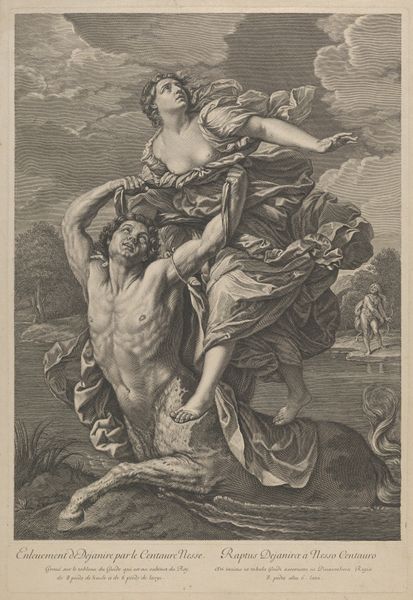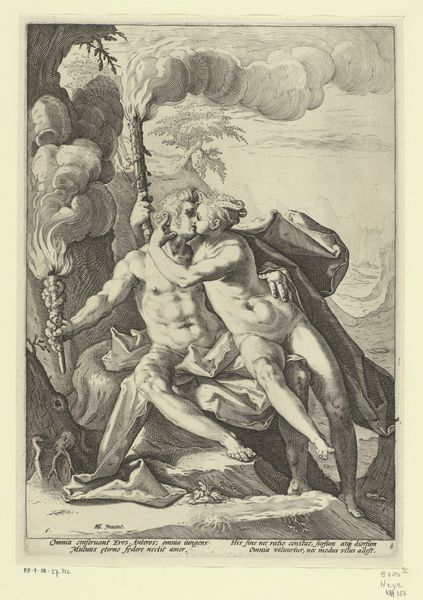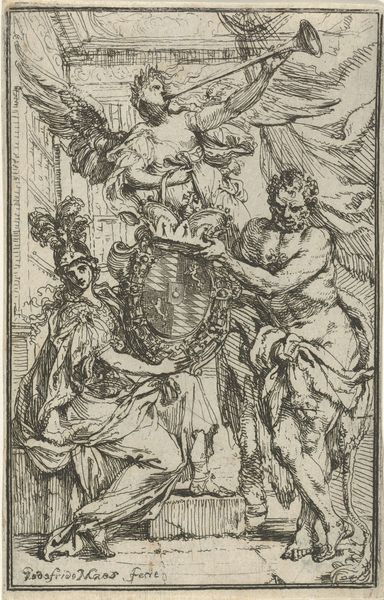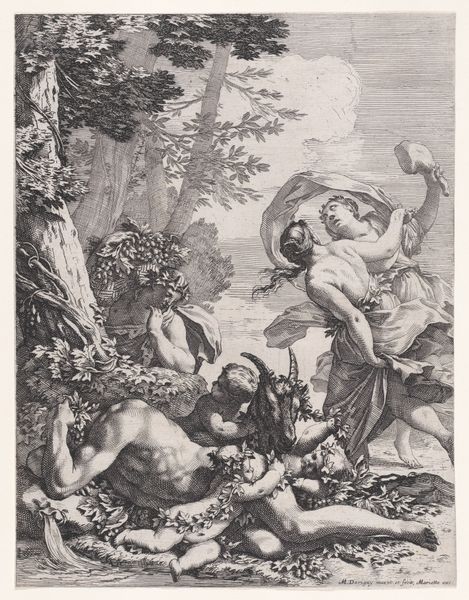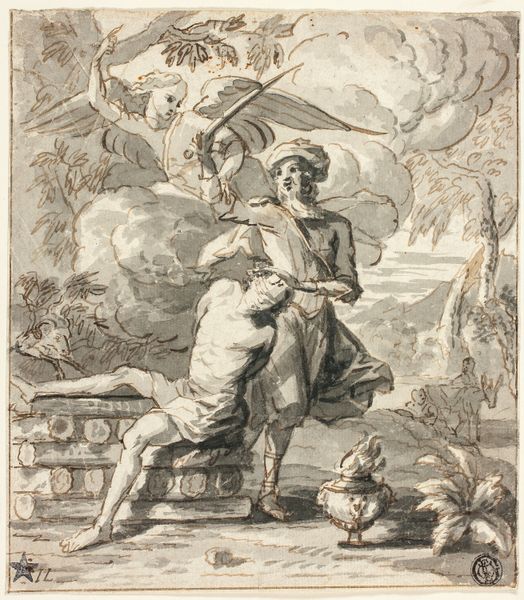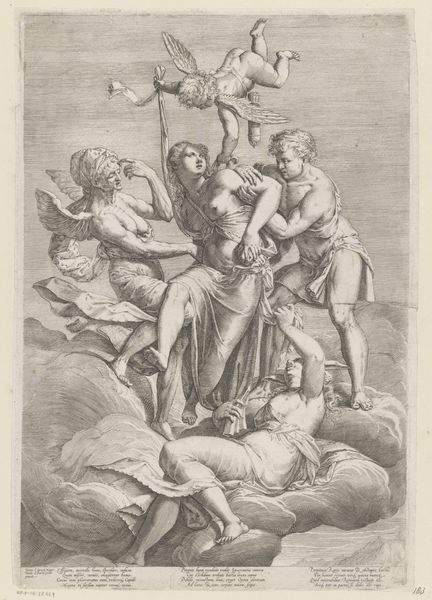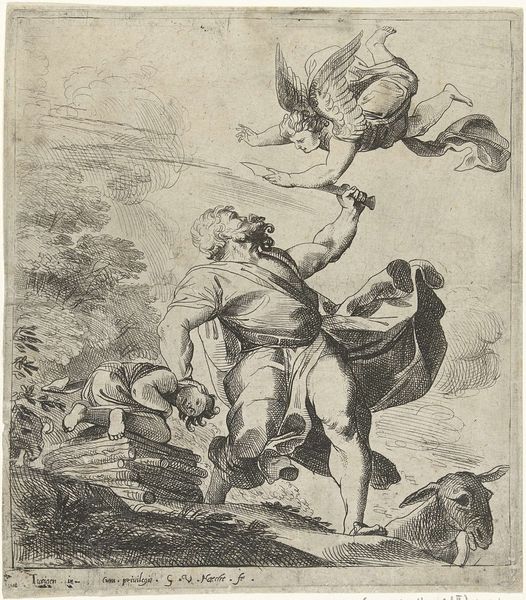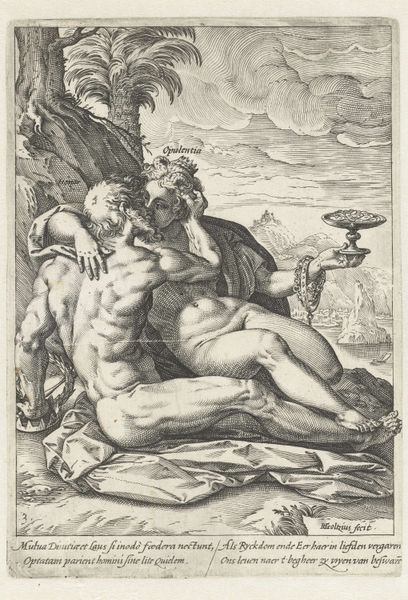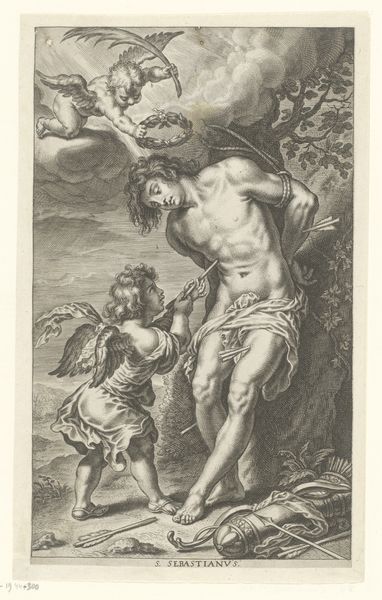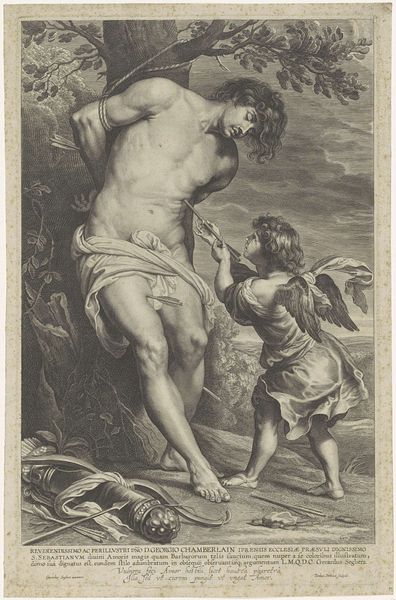
Neptune pursuing Coronis; Minerva interposes herself and turns Coronis into a crow 1724
0:00
0:00
drawing, print, engraving
#
drawing
#
baroque
# print
#
figuration
#
history-painting
#
engraving
Dimensions: Sheet: 11 7/16 × 8 9/16 in. (29 × 21.8 cm)
Copyright: Public Domain
Editor: So, this is "Neptune Pursuing Coronis; Minerva Interposes Herself and Turns Coronis into a Crow" created in 1724 by Francisco Vieira de Mattos. It’s an engraving, giving it this stark, linear quality. It definitely evokes drama! What strikes you most about this piece? Curator: I am drawn to the physical labor embedded in its creation. Engraving in the 18th century involved painstaking work with metal tools. It was a reproduction method to create multiple images – how do you think that availability of images shaped consumption back then? Editor: I hadn’t thought about the multiple image aspect... Hmm, I guess it allowed for wider distribution of these classical stories and perhaps shaped societal understanding or even idealization of those myths. But it seems removed from lived experience, really. Curator: Exactly. This image and many others circulated to affirm existing hierarchies and norms. Look at the central figures and their relative positions to the landscape, the labor and process further encodes specific meanings. The cost of production influenced who saw it. Does this complicate your initial impression of the drama depicted? Editor: Definitely! It adds a layer of societal context I wasn’t considering. The engraving, the method of production itself, becomes part of the message. Who was commissioning these prints and why? Curator: Patronage was significant. These engravings could celebrate a patron's status and reinforce narratives aligned with their interests, like power or moral virtues for instance. And this production created markets for engravers and printers and their studios. It speaks volumes about the period’s cultural and economic landscape. How do you feel differently about the image now? Editor: It feels less like a simple depiction of mythology and more like a crafted commodity carrying cultural weight and a message aimed at certain social classes of people who were the consumers of this art. Curator: Yes, art isn't simply created, but is thoroughly produced. By exploring materiality and process, we understand art’s embeddedness in broader social relations.
Comments
No comments
Be the first to comment and join the conversation on the ultimate creative platform.
